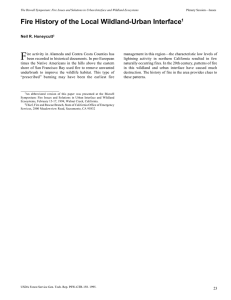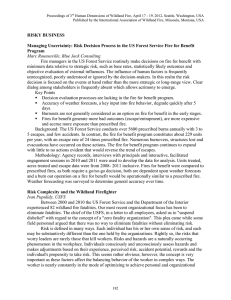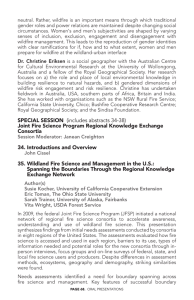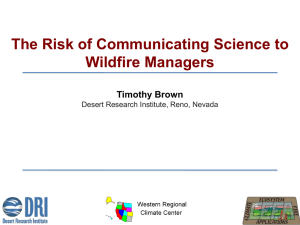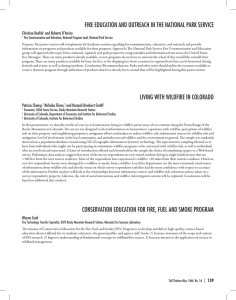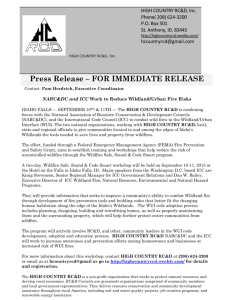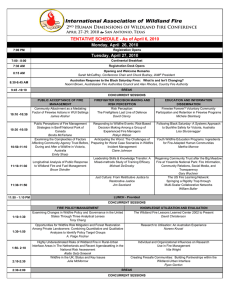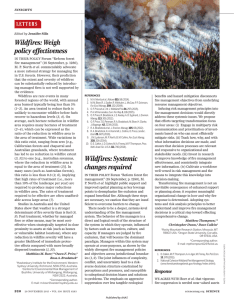B Institutionalizing Fire Safety in Making Land Use and Development Decisions
advertisement
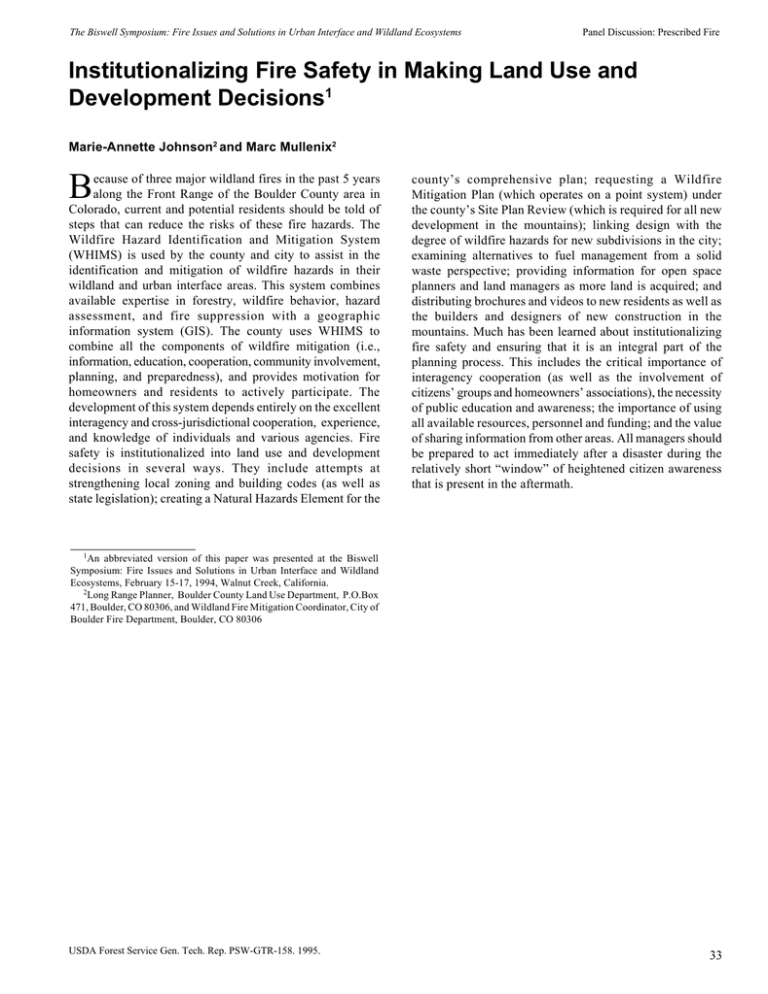
The Biswell Symposium: Fire Issues and Solutions in Urban Interface and Wildland Ecosystems Panel Discussion: Prescribed Fire Institutionalizing Fire Safety in Making Land Use and Development Decisions1 Marie-Annette Johnson2 and Marc Mullenix2 B ecause of three major wildland fires in the past 5 years along the Front Range of the Boulder County area in Colorado, current and potential residents should be told of steps that can reduce the risks of these fire hazards. The Wildfire Hazard Identification and Mitigation System (WHIMS) is used by the county and city to assist in the identification and mitigation of wildfire hazards in their wildland and urban interface areas. This system combines available expertise in forestry, wildfire behavior, hazard assessment, and fire suppression with a geographic information system (GIS). The county uses WHIMS to combine all the components of wildfire mitigation (i.e., information, education, cooperation, community involvement, planning, and preparedness), and provides motivation for homeowners and residents to actively participate. The development of this system depends entirely on the excellent interagency and cross-jurisdictional cooperation, experience, and knowledge of individuals and various agencies. Fire safety is institutionalized into land use and development decisions in several ways. They include attempts at strengthening local zoning and building codes (as well as state legislation); creating a Natural Hazards Element for the county’s comprehensive plan; requesting a Wildfire Mitigation Plan (which operates on a point system) under the county’s Site Plan Review (which is required for all new development in the mountains); linking design with the degree of wildfire hazards for new subdivisions in the city; examining alternatives to fuel management from a solid waste perspective; providing information for open space planners and land managers as more land is acquired; and distributing brochures and videos to new residents as well as the builders and designers of new construction in the mountains. Much has been learned about institutionalizing fire safety and ensuring that it is an integral part of the planning process. This includes the critical importance of interagency cooperation (as well as the involvement of citizens’ groups and homeowners’ associations), the necessity of public education and awareness; the importance of using all available resources, personnel and funding; and the value of sharing information from other areas. All managers should be prepared to act immediately after a disaster during the relatively short “window” of heightened citizen awareness that is present in the aftermath. 1An abbreviated version of this paper was presented at the Biswell Symposium: Fire Issues and Solutions in Urban Interface and Wildland Ecosystems, February 15-17, 1994, Walnut Creek, California. 2Long Range Planner, Boulder County Land Use Department, P.O.Box 471, Boulder, CO 80306, and Wildland Fire Mitigation Coordinator, City of Boulder Fire Department, Boulder, CO 80306 USDA Forest Service Gen. Tech. Rep. PSW-GTR-158. 1995. 33 34 USDA Forest Service Gen. Tech. Rep. PSW-GTR-158. 1995.
